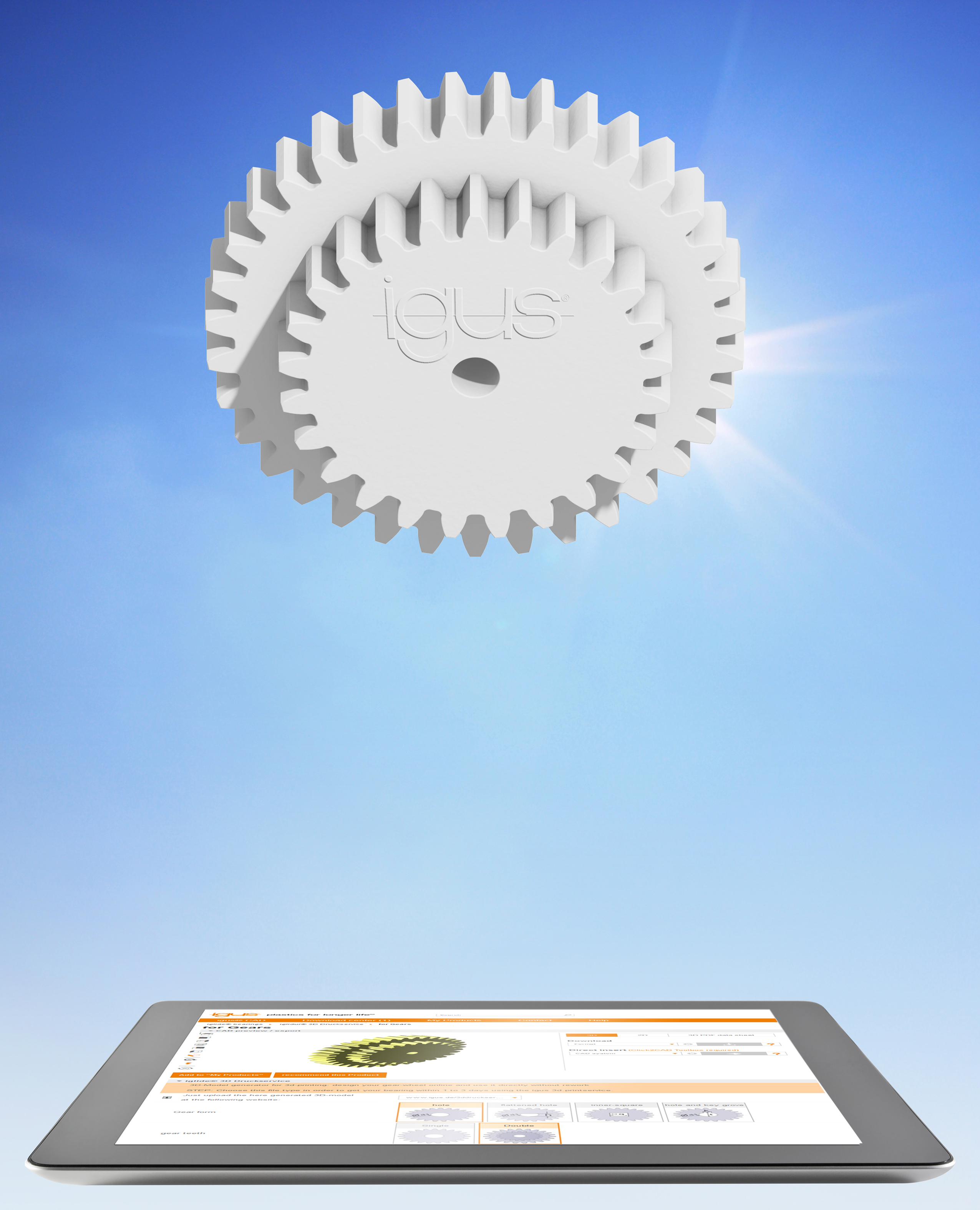If you are a designer, therefore, double gears are certainly of paramount importance in your work.
When force, torque or speed in gears need to be changed over more than one stage, this task can only be performed if the geometry of the teeth is optimal.
The only thing is that this type of gearing might raise some issues because it is geometrically complex and requires a lot of time to manufacture without tools. Sometimes, slight inaccuracies might even increase the wear and the noise.
To remedy this problem, Igus extends the functionality of the gear configurator for 3D printing.
Double gears can now be designed automatically online in a few seconds and then ordered directly.
How to achieve the perfect 3D model?
“The online configurator allows the design of a simple gear or a double gear. The designer only needs to select the appropriate gear module and set the number of teeth and the transmission of torque – such as one flattened hole, a square bore or hole with keyway. The configurator automatically uses this data to create the 3D model of the double gear with optimally modelled involute gear teeth, guaranteeing a quiet and long-lasting operation. Completely without complex and error-prone manual work or an external CAD programme.” After this phase, you can 3D print your 3D model.

The 3D printing service
Thanks to its laser sintering printer and the use of iglidur I6 SLS powder material, Igus can manufacture up to 3,000 gears per day.
The truth is that the traditional manufacturing of gears with machining might take several weeks and the production of small gears is less expensive using 3D printing technology.
According to Igus, “gears with a diameter of 12 millimetres and a depth of 16 millimetres cost € 1.70 per unit (for 100 units). A milled pendant costs € 2.80. Further savings arise in operation. Because, the gears from the 3D printer are robust and wear-resistant – thanks to the lubrication-free and maintenance-free material iglidur I6 specifically developed for gears.”
//pagead2.googlesyndication.com/pagead/js/adsbygoogle.js
(adsbygoogle = window.adsbygoogle || []).push({});





